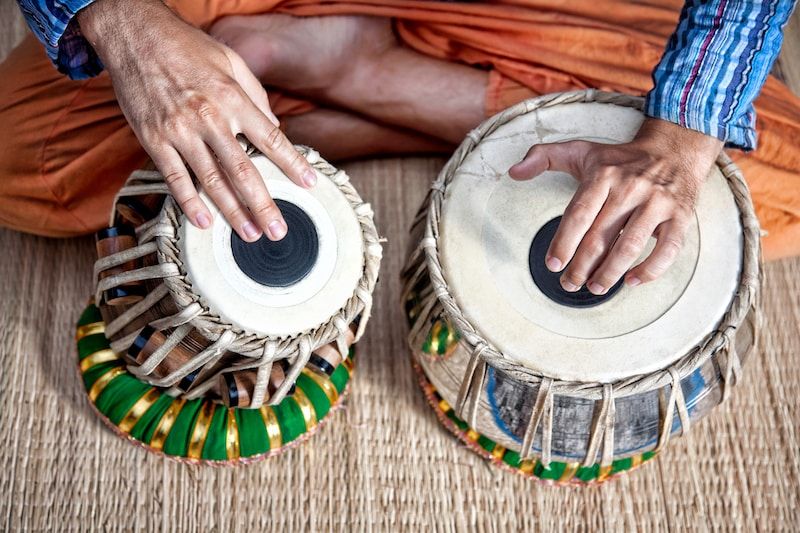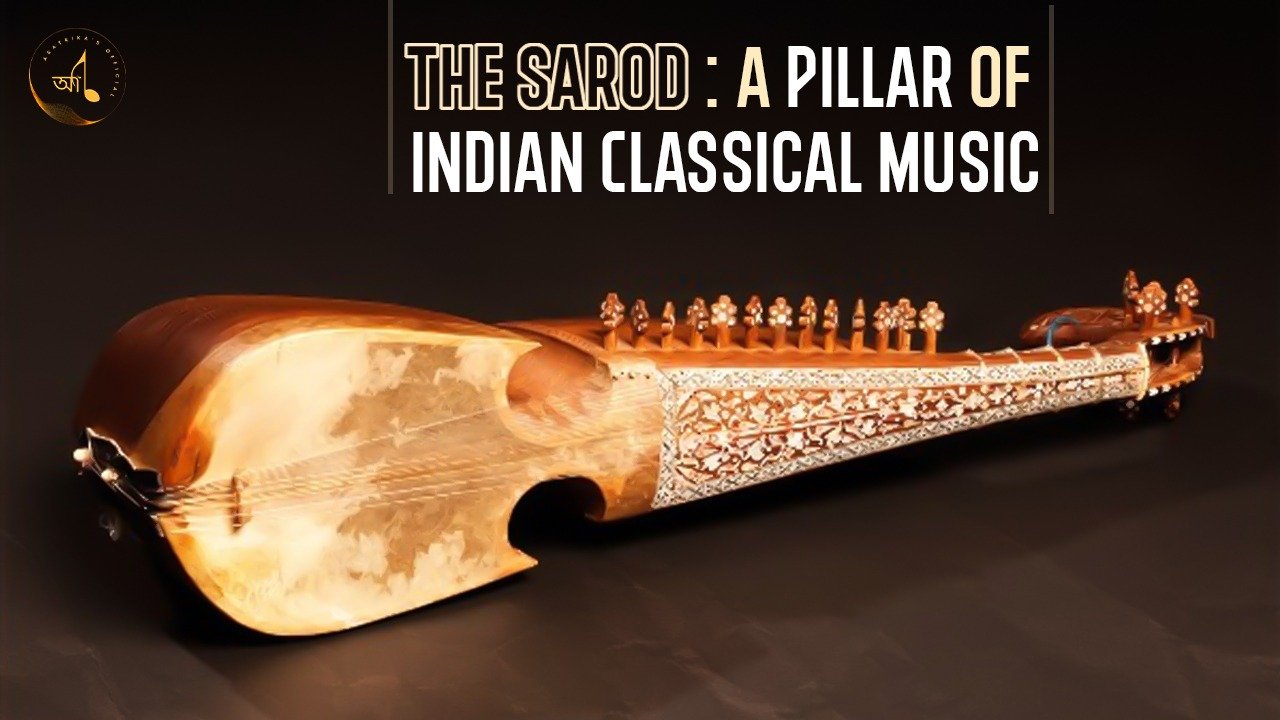ORIGIN
The hoary Raga Kedar occupies a pride of place in the Hindustani pantheon and is much loved in the ranks of both the laity and the connoisseur.
STRUCTURE
Its structure reveals a kaleidoscope of complex melodic gestures, conduct, and richness of character. It is generally accepted that it displays much thermal energy and is regarded as the Raagini of Raag Deepak. While preceding from Shuddha Madhyam (m) to Pancham (P), a touch of Gandhar (G) or a smooth passage from Gandhar (G) to Pancham (P) expressed as m G P is the more common way of instant raga manifestation.
TECHNICAL DESCRIPTION
The raga is of shaadava-sampurna nature, i.e., in its arohana (ascent), only six notes are used, and in avarohana (descent), all seven notes are used. In general, the progression of the raga is highly non-linear, which makes it difficult to capture its essence using arohana and avarohana.
The raga uses only natural (shuddha) versions of the Second (R), Third (G) and Sixth (D), both natural and sharp (tivra) versions of the Fourth (m and M, respectively "( m- tivra, M- shuddh)" and predominantly natural versions of the Seventh (N) but occasionally also its flat (komal) version (n). ( m- tivra, M- shuddh) "both natural and sharp" (tivra) versions of the Fourth (m and M, respectively)
Arohana: S M, M'P D M , D N S`
Avarohana: S' N D P, m P D P M~ , S R S
Pakad: S M, M P, m P m P, D P M, R S
The notes of the raga are s r g m (m is tivra) p d n s.
The most prominent (vadi) note is m, and the second most prominent (samvadi) is S.
VARIENTS
- Adambari Kedar
- Anandi Kedar
- Basanti Kedar
- Chandni Kedar
- Deepak Kedar
- Jaladhar Kedar
- Kedar Bahar
- Kedari Malhar
- Maluha Kedar
- Nat Kedar
- Shuddha Kedar
- Shyam Kedar
- Tilak Kedar
COMBINATIONS
Kedar has been combined with many other raags to form unusual and exciting jod combinations:
- Savni Kedar
- Basanti Kedar
- Kedar Bahar
- Nat Kedar







relx 電子菸 relx 悅刻 悅刻電子菸 電子菸 relx 電子菸線上購買 悅客電子菸 relex 悅克 relx電子煙 瑞克電子菸 悅刻主機 relx 主機 relx 電子菸台灣 電子菸主機 電子霧化器 電子菸價錢 悅刻煙彈 relx 煙彈口味 relx 煙彈 relx 煙彈口味推薦 悅刻煙彈口味 煙彈 relx relx 煙彈台灣 電子菸口味 菸彈電子菸 銳克煙彈 煙彈 菸彈 煙蛋 電子菸價格 煙彈口味 電子菸菸彈 電子菸購買 relx 1 代 relx 5代 悅刻五代 relx 6代 悅刻六代 relx 5代主機 悅刻五代主機 relx 6代主機 悅刻六代主機 relx 5代煙彈 悅刻五代煙彈 relx 6代煙彈 悅刻六代煙彈 電子菸 relx relx 電子菸價格 relx 電子菸台灣 電子菸主機 悅客電子菸 relx 煙彈口味推薦 relx 煙彈哪裡買 悅刻煙彈口味 relx 煙彈購買 relx 煙彈台灣 悅刻五代六代電子煙對決——煙彈口味新選擇
Leave a reply